The sun conure features striking yellow, orange, green, and red colors that immediately attract the eye. But those who own the playful bird attest to its personality, playfulness, and ease of trainability as the reasons to love them. The family-friendly bird is social, playful, highly intelligent, and able to form a quality bond with their adopted family. Because the sun conure has a long lifespan, it’s important to know everything about your sun conure, including its gender. Knowing the key differences in male vs. female sun conures helps make the right decisions on properly caring for them.
Comparing Male vs. Female Sun Conures
| Characteristic | Male Sun Conure | Female Sun Conure |
|---|---|---|
| Plumage | Slightly larger than the female with an expanded chest, larger head, and longer tail feathers. | May look lighter and a little washed out. |
| Physical Appearance | Smaller overall physique, including chest and head. Also possess shorter tail feathers. | Smaller overall physique including chest and head. Also possess shorter tail feathers. |
| Vocalization | Highly vocal, louder, with more direct and pointed calls. | Softer tones and less demanding tones. |
| Behavior/Personality | Can be aggressive and territorial towards other birds, especially during mating season. | Less aggressive, more docile, and show more affection towards owners. |
| Eye Color | Males can have darker-colored irises than their female counterparts. | Females can have lighter-colored irises than their male counterparts. |
| Courtship Behavior | Slightly larger than the female with expanded chest, larger head, and longer tail feathers. | Passive courtship behaviors. |
Key Differences Between Male And Female Sun Conures

Sun Conures are known for their affectionate, family, and owner-friendly disposition.
©narikan/Shutterstock.com
The key differences between male and female sun conures are their plumage, physical appearance, behavior and personality traits, courtship behavior, and the amount and type of vocalization they each demonstrate.
While there are many traits that are different between male and female conures, there are some key differences to look for when trying to determine your conure’s gender.
Male vs. Female Sun Conure: Plumage
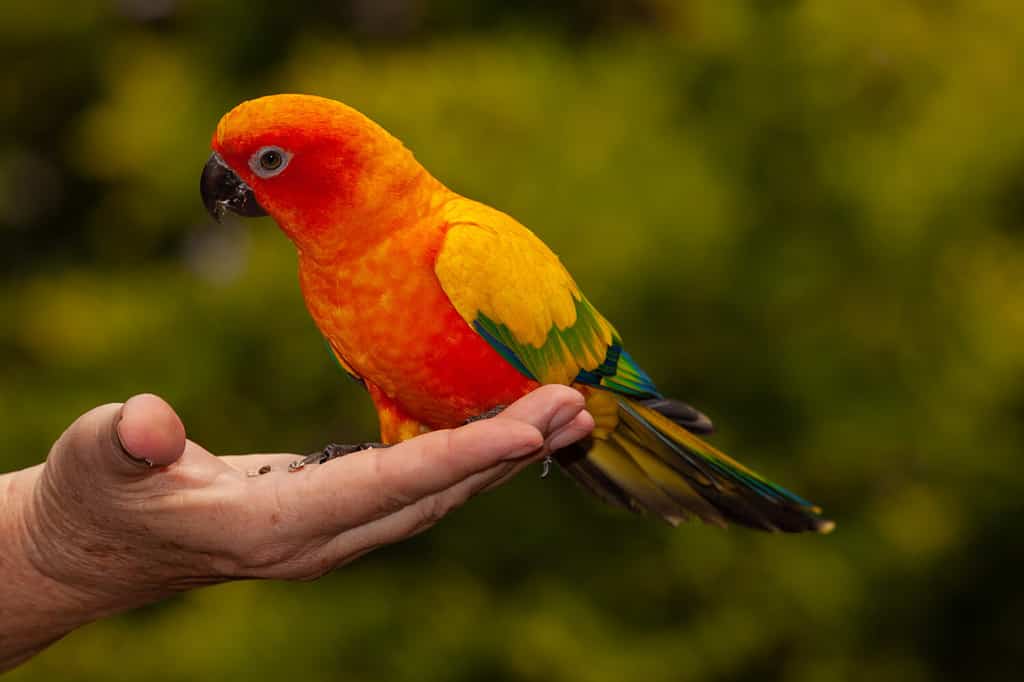
Sun conures display plumage in vibrant green, yellow, orange, and red.
©mark higgins/Shutterstock.com
The male sun conure will typically have more vibrant green, yellow, orange, and red plumage. While females have the same markings and coloring, their plumage can appear somewhat washed out or at least a little lighter.
Male vs. Female Sun Conure: Physical Appearance
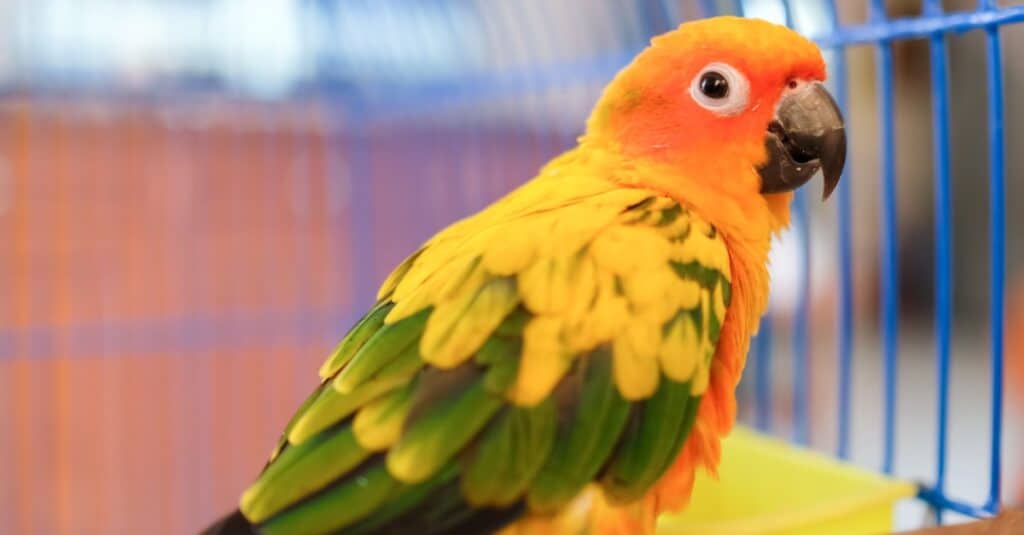
Both male and female sun conures have distinctive hookbill beaks.
©iStock.com/Ae11615
The male’s heads are larger and more rounded, and their chest cavities are larger. Female sun conures possess an overall smaller physique, including head, chest, and overall body makeup. The males possess longer tail feathers. A female sun conure can possess lighter colored irises when compared to the male. Both genders have hookbill beaks for holding things, breaking up food, grasping, and maneuverability. However, the male’s beak is stronger and broader, while the female sun conure’s beak displays a slimmer profile.
Male vs. Female Sun Conure: Behavior and Personality Traits
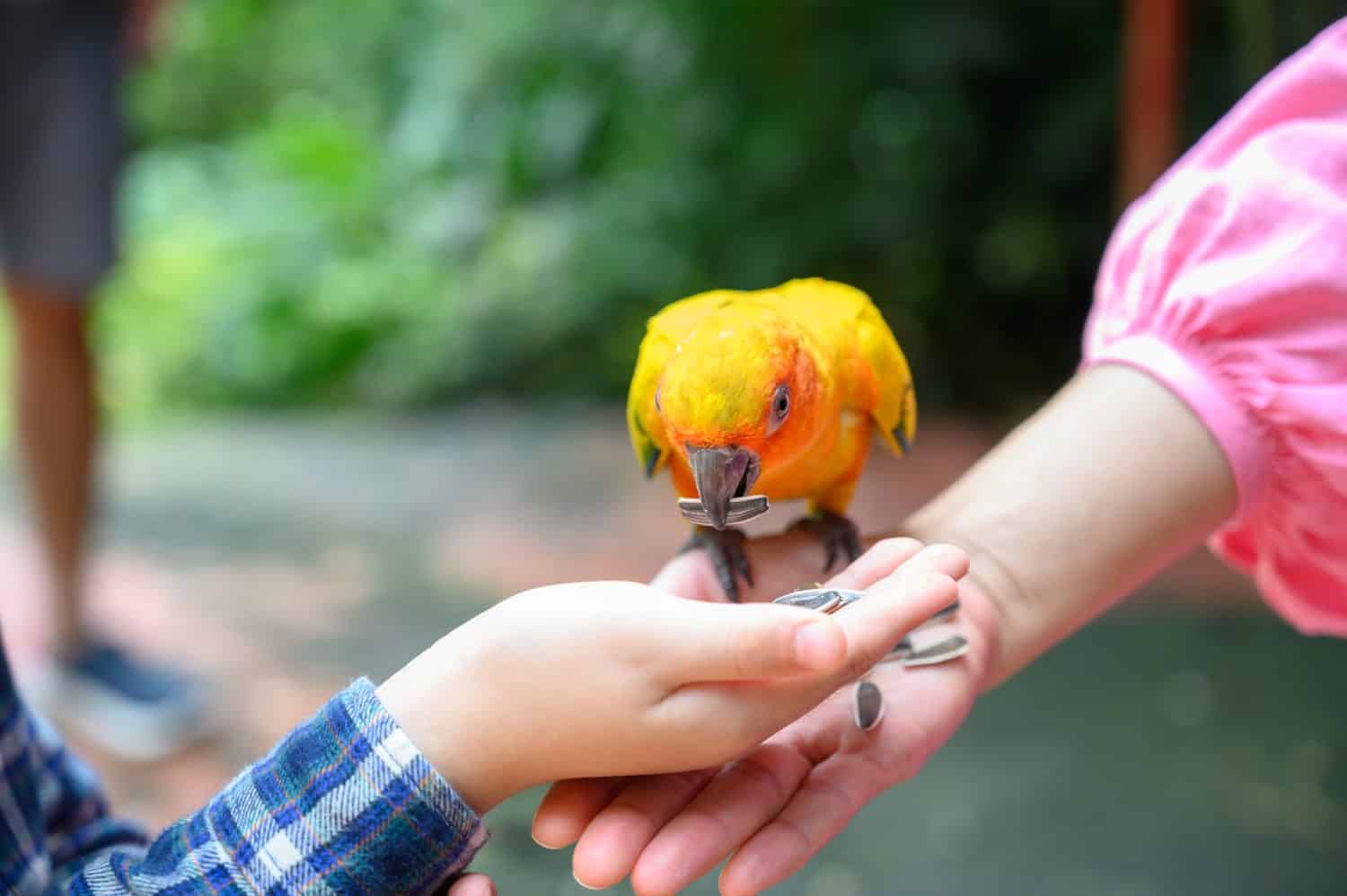
Sun conures are extremely social, easily trainable, and affectionate.
©Pratchaya.Lee/Shutterstock.com
Sun conures are not aggressive birds, but of the two, the male is more apt to occasionally show what appears to be aggressive behavior. This behavior is likely to be witnessed during mating season or while protecting its territory. Both genders are excellent family-friendly birds, with the females traditionally exhibiting more docile behavior with more affection and snuggly-type behavior toward their owners. Sun conures are social birds; males and females need attention and affection. They readily accept training and are more than willing to bond with and become a member of the whole family.
Male vs. Female Sun Conure: Courtship Behaviors
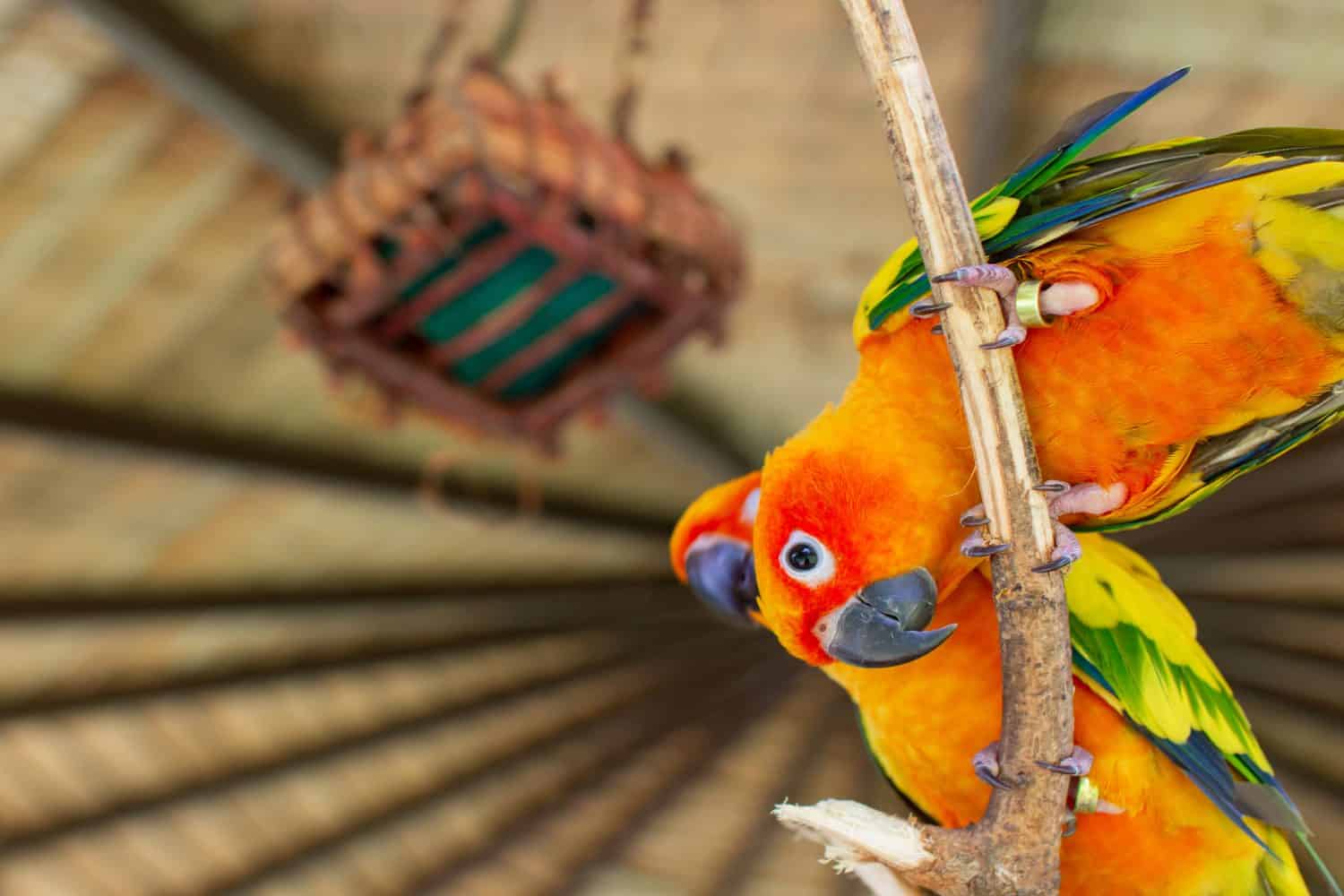
The sun conure’s courtship rituals are traditionally performed by the male while the female remains passive.
©fon.tepsoda/Shutterstock.com
For the most part, female sun conures are very passive during the courtship process. It’s the male sun conure that puts on the show. Males will puff their larger chests out while they fan and proudly display their vibrant plumage. To show they are viable breeding partners, they can show their feeding capabilities by regurgitating food. Additionally, it is now when the males may become territorial and actively protect their space.
Male vs. Female Sun Conure: Vocalization
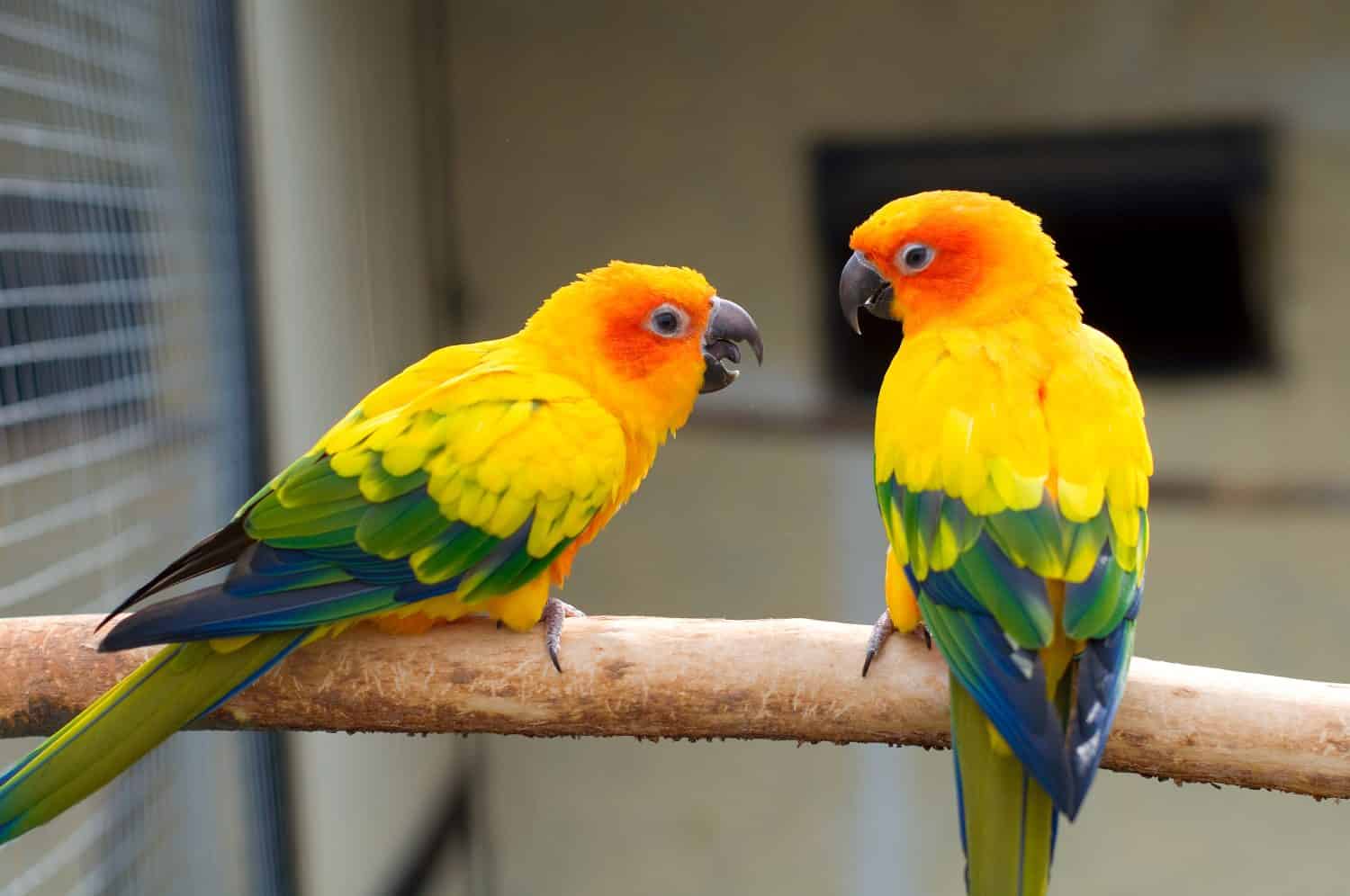
Male sun conures are more vocal with louder, more distinctive tones than females.
©svand/Shutterstock.com
Female sun conures demonstrate softer, less demanding tones than males when they vocalize. Their happy-sounding songs are compared to joyful melodies and tunes. The male’s vocals and songs are described as louder and more meaningful-sounding. Their calls, chirps, and songs register as more direct, with some meaning behind them. The tone of the vocals has been described as demanding and, at times, borderline screaming.
Determining a Sun Conure’s Gender Scientifically
Bird aficionados say that the sun conure does not reach sexual maturity until at least the six-month-old mark. Most, however, will not reach full sexual maturity until they are two years old. Up until then, an owner can look at all of the traits outlined above and feel sure that they know the gender, only to be surprised later. There are two scientific ways to confirm the sun conure’s gender for those owners that need to know immediately.
- Surgically sexing to determine bird gender. Surgically sexing birds is one way to absolutely identify the gender of your young sun conure. It is imperative that this procedure is performed by only a certified avian veterinarian, as there are risks involved. Anesthesia is applied while the surgeon scopes the bird for signs of testes or an ovary.
- DNA testing to determine bird gender. With the availability and widespread use of DNA testing in the pet population, bird DNA testing has become a preferred way to learn about our birds as well. It is advantageous over surgical methods simply because it is non-invasive and therefore carries none of the risks involved with surgery and recovery, including possible infection. Blood samples can be obtained with a simple nail clip, severely reducing the amount of stress put on the bird. Tests are returned confirming the bird’s gender and lineage.
Male vs. Female Sun Conure: Minimal Differences, Maximum Enjoyment
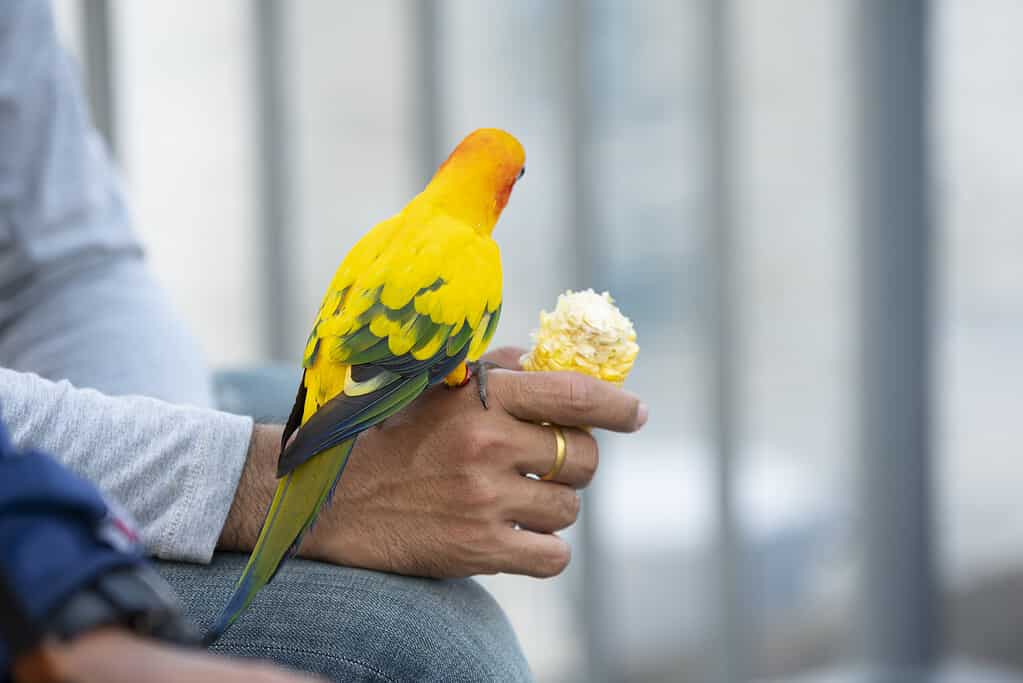
Sun conures are very affectionate and social with their owners.
©Thiradech/iStock via Getty Images
When it comes down to it, sun conures are excellent and well-received additions to your family, no matter what their gender. They are highly social and willing to interact and become one of the family. While it can be difficult to determine if you are getting a male or a female when choosing a sun conure under two years of age, the above telltale signs may point you in the direction you want to go. If gender is not an important issue, then know that you will be adopting a member of the household who will provide love, affection, background music, and quirky entertainment for years to come.
The photo featured at the top of this post is © apiguide/Shutterstock.com
Thank you for reading! Have some feedback for us? Contact the AZ Animals editorial team.







